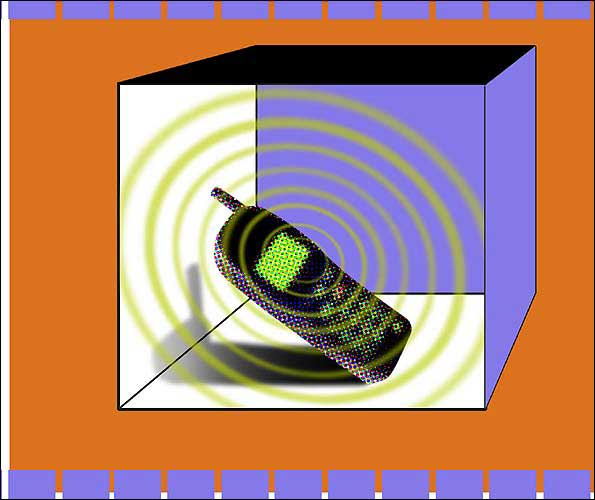Going mobile
Cell phone complaints often ring true
It’s not unusual to see Cal DeMercurio with a cell phone clapped to his ear. Out and about town grocery shopping, picking up supplies, taking care of business or driving to and from work, the restaurant owner stays connected with a wireless connection.
A thousand minutes a month? No problem. DeMercurio zooms through them.

“It’s a necessary evil,” said DeMercurio, who owns two Redding, Calif., restaurants. “I wish I could live without it, but it would add hours onto my already long days.”
DeMercurio is hardly unique. Millions of people use cell phones every day. They are nearly as ubiquitous as the automobile.
There are 129.3 million cell phone subscribers in the United States, according to the Cellular Telecommunications Industry Assn., compared with a 2001 national population estimate of 285 million people.
But just as cell phones have become common, so are complaints about how they are used. Concerns about people driving and talking on the phone have driven 42 states to propose outlawing phone yakking behind the wheel.
So far, only New York has followed through and outlawed the practice.
California Highway Patrol spokesman Monty Hight said cell phones aren’t more to blame for accidents than any other distraction, such as driving and spilling coffee or food, dealing with a crying baby in the back seat or fiddling with the radio.
The common problem, he said, is people driving too fast in relation to the amount of attention they pay to the road.
“We don’t want to tell you not to talk on the phone while you’re driving,” Hight said. However, the patrol recommends people pull off the highway if they plan to have a lengthy conversation.
“The proper speed for you should be zero if you are not paying attention,” Hight said.
A recent University of Utah study said people use 60 percent of their cell phone time while driving.
The study looked at whether drivers’ performance suffered when they talked on the phone and operated a driving simulator. Simply talking on a phone didn’t affect their ability to negotiate the road.
“On the other hand, studies have found that working memory tasks, mental arithmetic tasks and reasoning tasks disrupt simulated driving performance,” the study said.
The study concludes that even using hands-free devices doesn’t improve safety because the distraction comes from the conversation rather than holding a phone.
DeMercurio does much of his talking while driving, especially during the 40-mile commute between his Shingletown home and his restaurant in Redding.
But he believes there are limits to where and when it is appropriate to talk with someone on the cell phone.
At his restaurant he doesn’t mind lunch customers talking on their cell phones. But dinner is another matter.
“At lunchtime, again, it may be a necessity,” DeMercurio said. “But at nighttime, if you are out to enjoy a nice $100 dinner and you’ve got your cell phone on, you’ve got your mind on the wrong thing.”

